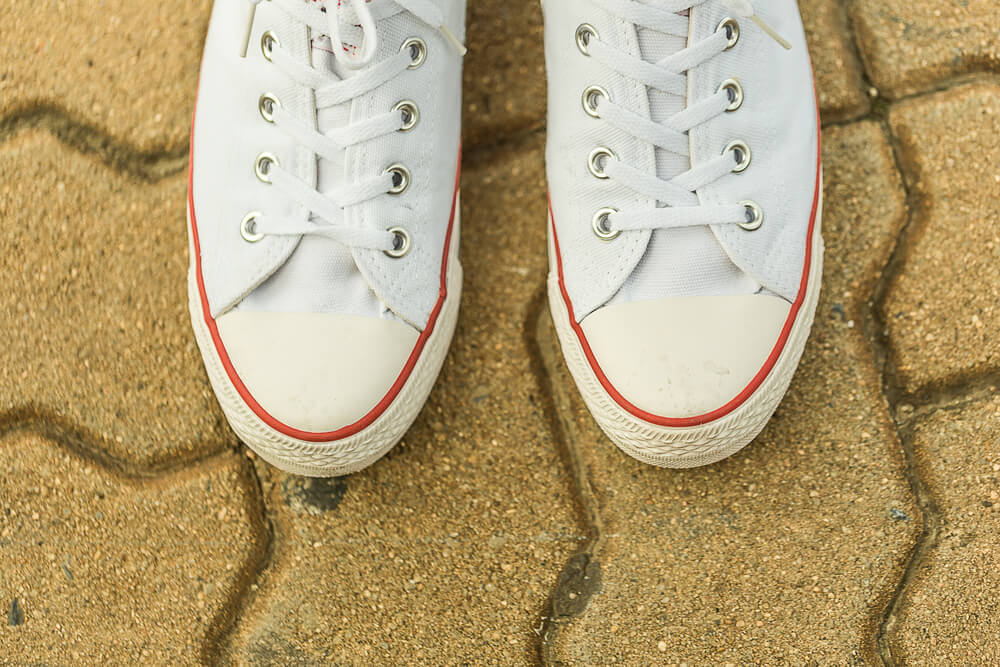The Mystery of Yellowing Shoes
If you’re a shoe enthusiast, noticing that your favorite pair of sneakers has turned a shade of yellow can be frustrating. This discoloration, often seen with white shoes and lighter colors, can happen for multiple reasons. Understanding why shoes turn yellow not only helps in maintaining their appearance but also enhances your overall footwear experience. In this article, we will delve into the reasons behind yellowing shoes, share real-world experiences, and offer tips to prevent or rectify this common issue.
Common Reasons Shoes Turn Yellow
1. Exposure to UV Rays
One of the primary reasons shoes turn yellow is prolonged exposure to sunlight. UV rays can have a degrading effect on the materials used in footwear, particularly in synthetic materials like rubber and plastics. A study showed that a pair of white sneakers left outside for just a few days during summer could exhibit noticeable yellowing. This is common with popular sneaker brands that use white rubber soles or frosted plastics.
Additionally, some shoes contain chemical compounds that can react with UV light, causing the materials to oxidize and change color. To mitigate this, it’s crucial to store your shoes away from direct sunlight or UV sources, especially if they’re not in use.
2. Oxidation of Materials
Oxidation is a chemical reaction that occurs when materials are exposed to oxygen. For shoes, this often happens in white or light-colored designs. You might have noticed that even if you do not wear your shoes often, they can still develop a yellowish hue over time. The reaction can be exacerbated by humidity and temperature, leading to accelerated aging of your footwear.
A case study of a popular sneaker brand found that shoes stored in high-humidity environments turned yellow faster than those kept in stable conditions. Investing in silica gel packs can help maintain a suitable environment for your footwear storage.
3. Sweat and Dirt Accumulation
Another major contributor to yellowing shoes is the accumulation of sweat and dirt. When you wear shoes, the moisture and oils from your feet can seep into the materials. Over time, this can lead to discoloration, particularly on the insoles, sides, and laces. A simple wipe down with a damp cloth post-use can make a difference in maintaining your shoe’s original color.
It’s worth noting that different types of materials respond differently to sweat. For example, leather might show sweat stains prominently, while synthetic mesh can absorb moisture. To prevent this, consider applying a protective spray before wearing your shoes, especially during workouts or in warm climates.
Preventing Yellowing: Tips for Shoe Care
1. Regular Cleaning
To keep your shoes looking fresh, regular cleaning is essential. A simple routine of removing dirt post-wear can go a long way. Use a soft brush or cloth with mild soap and water to clean the surface of your shoes. For deeper cleaning, specialized sneaker cleaners are available that cater to various materials while being gentle on the fabric.
2. Store with Care
Proper storage is vital in preventing yellowing. Use shoe boxes or organizers that shield your shoes from direct sunlight. Keeping them in a cool, dry place can slow down oxidation and preserve their color. For sneakers, consider using shoe trees to help maintain their shape and prevent creasing, which can also expose more materials to discoloration.
3. Protective Sprays and Products
There are various protective sprays and products designed to repel water and dirt, which can also mitigate the chances of yellowing. Look for sprays specifically made for the material of your shoes—be it leather, suede, or canvas. Applying these before wearing new shoes can create a barrier against stains and discoloration, prolonging their life and appearance.
Product Highlight
One popular product in the market is the Crep Protect Invisible Spray. It creates a hydrophobic layer that repels liquids and dirt, making your shoes easier to clean and maintain their original color. Many users have found that regular use significantly reduces the chances of yellowing.

Real-World Experiences: How People Deal with Yellowing Shoes
Case Study: From White to Yellow
Let’s consider the case of Sarah, a fitness enthusiast who invested in a pristine pair of white running shoes. Despite her care, she noticed that the shoes started yellowing within a few months. After seeking advice, she learned about the impact of sweat, and sunlight, and adjusted her storage and cleaning habits. By implementing a regular cleaning schedule and adopting a dedicated shoe box, she managed to restore some of her shoes’ original vibrancy.
Comparative Table: Yellowing Prevention Techniques
| Technique | Effectiveness | Cost | Ease of Use |
|---|---|---|---|
| Regular Cleaning | High | Low | Easy |
| Proper Storage | Medium | Low | Easy |
| Protective Sprays | High | Medium | Very Easy |
What to Do If Your Shoes Have Already Turned Yellow
1. Cleaning Solutions
If yellowing has already occurred, don’t despair! There are several cleaning solutions available that can help restore your shoes. For white sneakers, a toothpaste and water mixture can work wonders. Apply it with a toothbrush, let it sit for a few minutes, and rinse it off.
2. Baking Soda Paste
Another effective remedy is using a baking soda paste. Mix baking soda with water to create a thick paste and apply it to the yellowed areas. This method has been praised by many sneakerheads who have successfully revived their beloved kicks. After letting the paste sit for 30 minutes, rinse them off, and you might be surprised by the results!

3. Commercial Cleaning Products
Many brands now offer dedicated cleaning kits designed specifically to counteract yellowing. Check out Sneaker Lab or Jason Markk for highly-rated products. If you’re not comfortable with DIY methods, these options can provide a safe and effective alternative.
FAQs About Shoe Yellowing
1. Why do white shoes turn yellow over time?
White shoes turn yellow primarily due to oxidation, exposure to UV rays, and accumulated dirt and sweat. Regular care and proper storage can significantly mitigate this process.
2. Can yellowing be reversed?
Yes, yellowing can often be reversed using certain cleaning methods like baking soda, toothpaste, or commercial cleaners specifically aimed at restoring white shoes.
3. How can I avoid yellowing on my sneakers?
To avoid yellowing, keep your sneakers clean, store them in a cool, dark place, and consider using protective sprays designed for footwear.

4. Are certain shoe materials more prone to yellowing?
Yes, synthetic materials such as rubber and plastics are typically more prone to yellowing than natural materials like leather, which can also discolor but often in different ways.
5. Does humidity affect shoe yellowing?
Absolutely! High humidity can accelerate oxidation, making shoes more susceptible to yellowing. Keeping them in a dry environment is essential.

6. How can I protect my shoes from sun damage?
Store your shoes in dark, cool environments and consider using UV-repelling sprays designed for footwear.
7. What should I do if my shoes start smelling along with yellowing?
If you’re facing both yellowing and odors, cleaning them with baking soda can help. Also, consider letting them air out and using odor-fighting insoles.

8. Is there a specific cleaning routine I should follow?
Yes, a good routine might include cleaning immediately after each wear, deep cleaning weekly, and using protective sprays monthly.
9. Can I put my shoes in the washing machine?
It depends on the material. Some sneakers can handle it, but be sure to check the tag and use a gentle cycle to prevent damage.

10. Are there products that can restore yellowed soles?
Yes, products like sole restorers and specialized whitening agents are available. Many sneaker enthusiasts swear by these for reviving old sneakers.